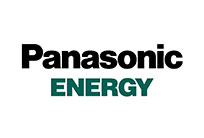Emergency lighting
What is emergency lighting and how does emergency lighting work?
Fluctuations in the energy grid or entire power outages are omnipresent, but the causes are incalculable and have the consequence of increasing the danger for affected people.
Emergency lighting is considered an umbrella term and is subdivided into safety lighting and backup lighting. In the event of a power failure or a malfunction of the general electrical lighting, the emergency lighting becomes or remains effective with the emergency lighting battery.
It is particularly important that emergency battery lighting provides a second lighting system independent of the general supply. A safety power source or fire-retardant wiring is essential here. The safety power source or backup power source can be generating sets or battery systems. In the case of battery-operated emergency lighting, a distinction is made between continuous operation and standby operation. While standby switching describes switching on the emergency lighting in the event of a power failure, continuous switching ensures that the emergency lighting is in constant operation.
In the case of a power failure, lives can depend on emergency lighting with rechargeable batteries. Not only do strangers find it difficult to navigate in the dark, but even people who know their way around can panic and no longer see where they are, let alone know how to get outside without emergency lighting. To ensure the safety of many people in this situation, lighting and electrical planners, installers, operators and contractors need to ensure professional installation of emergency lighting in compliance with many standards, regulations and guidelines. Regular maintenance of emergency lighting and safety lighting is indispensable and is the responsibility of the building operator, who is obliged to repair and maintain the safety lighting.
Electrical faults are not uncommon, safety lighting protects against accidents and panic, which is why it is also called anti-panic lighting. It allows people to leave the building safely in the event of panic. Depending on the workstation or requirement, it may be advisable to draw up a work sequence in the event of danger. The familiar green and white escape sign lights with a stylised person and an arrow pointing in the direction of escape are regarded as a globally recognised pictogram and represent the safety guidance system of a building. The exception is railway tunnels, where the emergency exits are marked in blue to avoid confusion with the green railway signals and emergency lighting.
Why emergency lighting with rechargeable battery?
Our eyes absorb 80% of all information. If there is a power failure and we are in total darkness, panic can quickly set in. In buildings where many people are working, an incalculable risk arises that can become dangerous for everyone involved. To ensure that everyone present can leave the building safely, we need emergency lighting with rechargeable batteries to provide safe illumination independently of our power supply system. The emergency luminaires light our way and make obstacles such as stairs visible while we follow the safety signs outside, together this is our emergency lighting that keeps us safe.
What types of emergency lighting exist?
Emergency lighting is considered an overall term and is separated into safety lighting and back-up lighting. Generally speaking, safety lighting must be installed when there is a risk of accidents in the case of a power failure. Back-up lighting, on the other hand, is used when injury to persons is not to be expected. Backup lighting ensures the continuation of an ongoing activity that cannot be interrupted, such as an operation in a hospital. In the event of a power failure, back-up lighting provides enough light to finish a task; this can also be of economic interest.
Not only emergency lighting with rechargeable batteries, but also safety lighting is further divided into safety lighting for escape routes, anti-panic lighting and safety lighting for workplaces with special risks. Safety lighting for escape routes is used to help people leave a building safely, illuminate escape and rescue routes and make barriers such as staircases visible. In this case, the emergency lighting battery, or safety lighting, ensures safe exit from a building via escape routes. For this purpose, escape sign luminaires are used on the one hand and emergency luminaires on the other. The purpose of anti-panic lighting, as the name suggests, is to prevent people from panicking, especially in large groups (emergency lighting in the event of a power failure in a department store). Anti-panic lighting ensures adequate visual conditions to prevent mass panic in the dark and to provide safe arrival at escape and rescue routes. The guaranteed brightness of the anti-panic lighting can be compared to a full moon night. In summary, anti-panic lighting has only two tasks. On the one hand, to prevent people from panicking and, on the other, to ensure that it is possible to reach places from which escape routes clearly emanate. The purpose of safety lighting for workplaces with special risks is to help the people concerned to finish their work there if necessary so that they can then leave the building safely. It is to be installed where there is an acute risk of accident in the case of a power failure (running machines, pits). All segments together form the vital emergency lighting.

Which battery is suitable for emergency lighting with rechargeable battery?
The choice of battery for emergency lighting with rechargeable battery is individual. This depends, among other things, on the surrounding temperatures at the installation site. Batteries are subject to a chemical process and only have a certain service life. Thus, the capacity can decrease over the years, which can have a negative effect on the emergency lighting. In addition, battery performance is dependent on temperature, which can have a major impact on performance if it is not at the optimum value. For emergency lighting with high reliability, good performance and a long service life, even under difficult conditions if necessary, a lead-acid battery is recommended. SSB Battery batteries are particularly suitable for applications with a long autonomy time for emergency lighting and safety lighting.
The characteristics of the installation room are also important when it comes to the type of installation. It depends, on the one hand, on the dimensions of the batteries, but also whether it is possible to organise the installation of the batteries for emergency lighting in battery cabinets or safety cabinets. Depending on the chemical nature of the battery, an electrolyte-resistant coating on the floor or special ventilation of the room may be necessary.
Who is allowed to plan emergency lighting and how often does emergency lighting need to be tested?
The planning and testing of emergency lighting with rechargeable batteries is the responsibility of the person in charge, e.g. the management. When planning emergency lighting, the technical rules for workplaces on the subject of safety lighting, optical safety guidance systems should be followed. The first step is to draw up a risk assessment to ensure that every person can leave the building unharmed in an emergency.
The emergency lighting must be professionally tested at regular intervals. Testing intervals can also be found in the risk assessment, taking into account the manufacturer's specifications. The test must be carried out by a person qualified to test emergency lighting. Damage that may impair the function must be repaired immediately.

When is emergency lighting mandatory and where is it required?
People's safety is the main focus of emergency lighting with rechargeable batteries. Buildings must be prepared for emergencies in order to protect people. Emergency exits, first aid and fire-fighting facilities need to be marked and escape and rescue routes as well as hidden hazards need to be illuminated. With all the standards, regulations and laws that need to be observed for emergency lighting, one fundamental principle is most important: emergency lights and signs must be recognisable in the case of a power failure or heavy smoke development.
This is the principle that ensures that people all over the world, regardless of origin, language and age, make it safely out of an endangered building with the help of emergency lighting.
The regulations for emergency lighting in buildings depend, among other things, on the size, the known and hidden hazards and other criteria. In the following, we therefore show you a few criteria for workplaces where emergency lighting is required:
- Workplaces frequented by people (restaurants, railway stations)
- Workplaces accommodating a high number of people, floors, winding escape routes or hazards and risk of accidents (high-rise buildings)
- Workplaces that require crossing large spaces (entrance halls, open-plan offices)
- Workplaces that do not have daylight (sales rooms, workshops)
To help you to understand this better, we have listed a few workplaces where emergency lighting and safety lighting are indispensable:
- Restaurants and bars, hotels and guesthouses
- High-rise buildings and office buildings, multi-storey car parks, garages
- Hospitals, police stations and psychiatric wards
- Airports, train stations
- Daycare, schools, nursery
- Supermarkets and department stores
The following escape routes and rooms should always have extensive emergency lighting:
- Corridors and staircases as well as steps necessary for escape and rescue routes
- Rooms between necessary staircases and staircase extensions
- Escape routes and exits to the open air (emergency escape routes and emergency exits)
- Rooms, without daylight
- Lifts and lift vestibules
What needs to be considered for emergency lighting?
When planning and installing emergency lighting, many standards, regulations and laws must be observed. Among other things, the Occupational Health and Safety Act and the Building Act come into play. If a risk assessment of the workplace shows that hazards can be expected in the case of a lighting failure, emergency lighting must be installed.
The switch-on time of the emergency lighting takes place in the case of a standby circuit, while the switch-over time is applied in the case of a continuous circuit. This is referred to as a maximum duration of 0.5 seconds.
In the following, we have compiled the most important requirements and technical rules for emergency lighting for you at a glance:
- Even light intensity: The light should shine evenly everywhere. The difference between the highest and lowest illuminance must not exceed 40:1. At least 1 lux horizontal illuminance should be provided along the central axis of escape and rescue routes. Unless particularly hazardous areas are involved, 15 lux is the minimum
- Full brightness:The safety lighting must be illuminated with one hundred percent luminosity within 15 seconds after the power failure. The minimum required illuminance must already be reached after 0.5 seconds.
- Colour rendering index: The colour rendering index of emergency lighting must be at least Ra 40 to make safety colours recognisable.
- Installation height: Escape signs and luminaires must be placed at least two metres above the ground to ensure illumination.
- Lighting: Escape signs must be illuminated or backlit on all escape and rescue routes. If an emergency exit is not directly visible, several illuminated/backlit escape signs must be installed along the route. Glare must be avoided at all costs.
- Battery life: Emergency lighting or emergency exit signs should be lit for at least three hours independently of the general power supply.
We would be happy to advise you personally on this topic. You can find our contact options on our contact page.
















